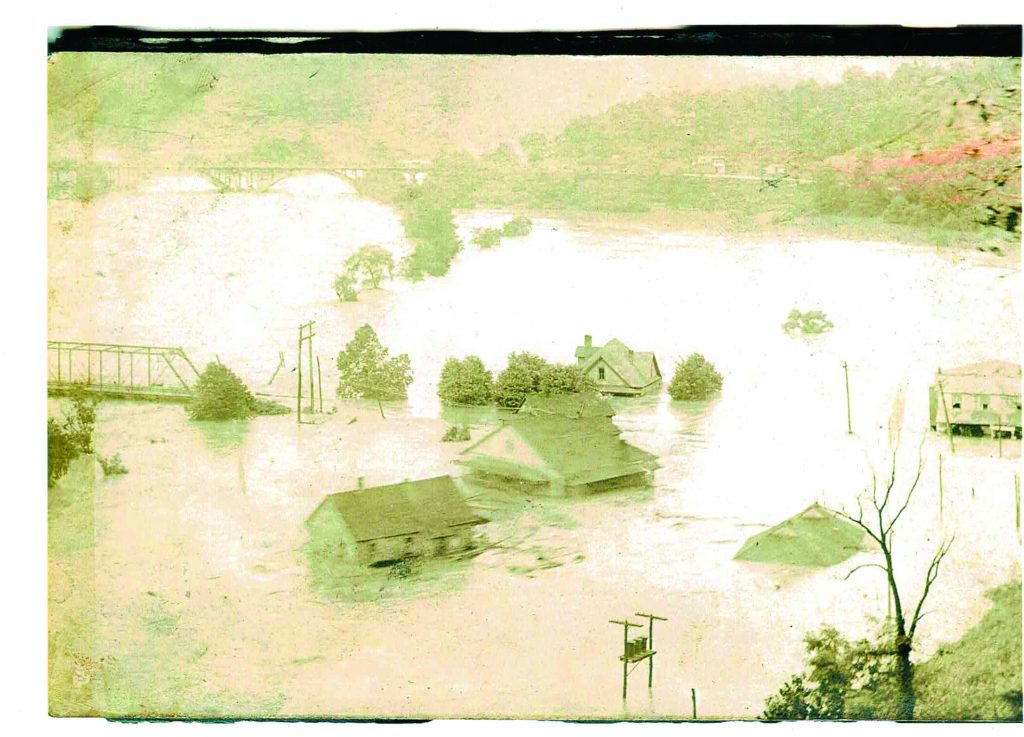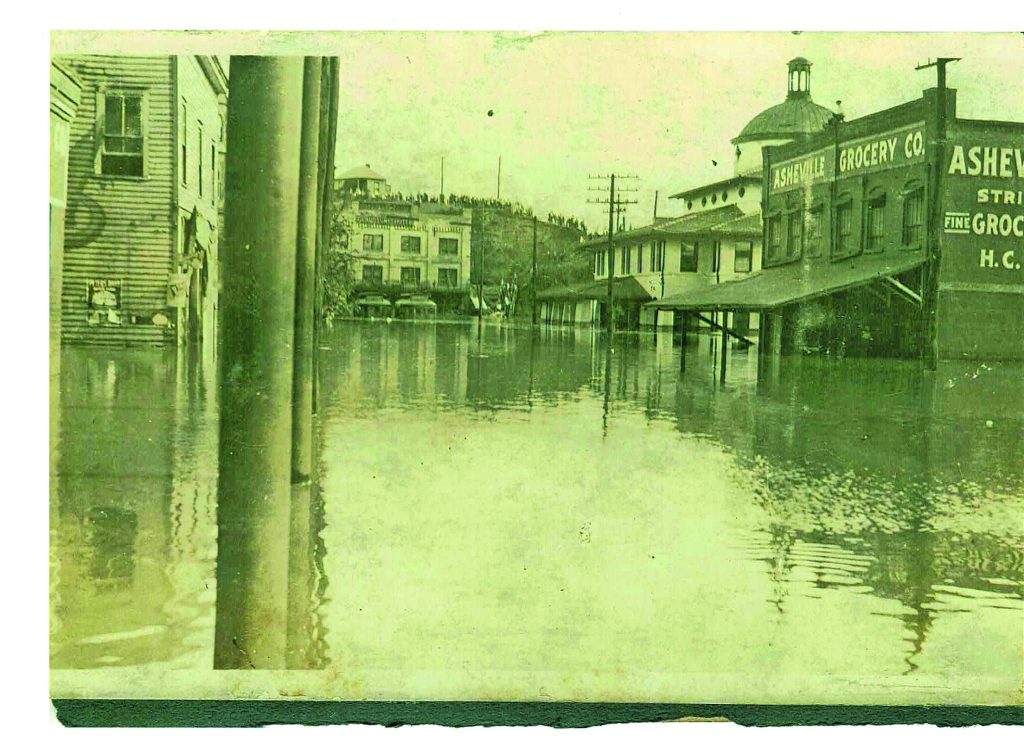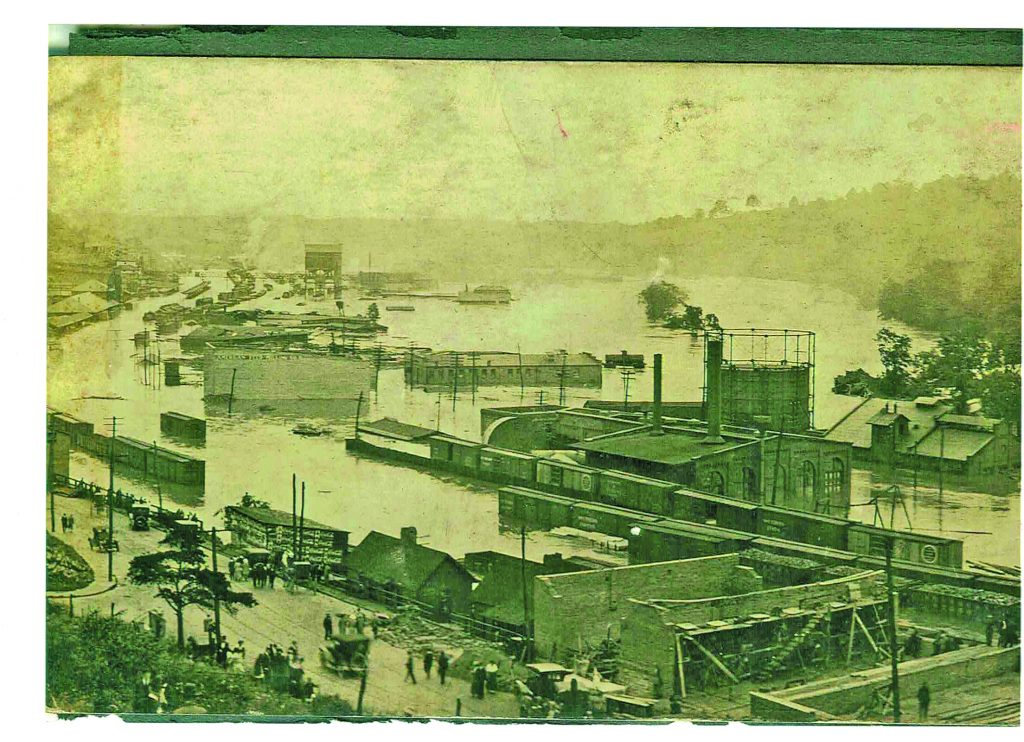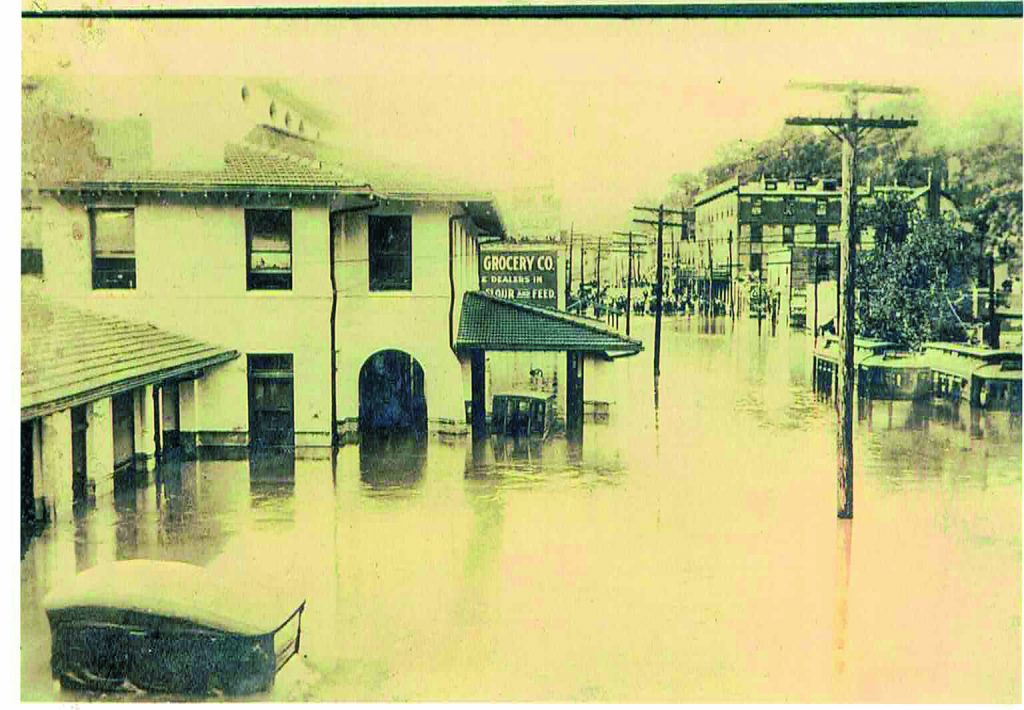by Bruce Whitaker
I was attending the Russell reunion about a month ago and a cousin brought her grandfather Russell’s old picture album to the gathering. It contained family pictures as one might expect, but it also contained, to my surprise, photos of the 1916 flood. Bob Russell apparently was working for the Southern Railroad at the time of the flood. The pictures had been taken by Higgsoon Photo for Southern Railroad. These pictures are not commonly available and I thought they would be of interest to our readers.

A hurricane hit the Gulf Coast the first week of July 1916. The hurricane traveled northeast from the Gulf of Mexico toward Western North Carolina. The storm remained almost stationary over the mountains from July 8 – 10. The storm dumped a large amount of rain over the area, the ground became saturated, and the streams and rivers were near flood stage. Less than a week later another hurricane hit the Atlantic coast. It moved northwest across South Carolina toward the mountains. A high-pressure area in the northeast stalled this second hurricane over Western North Carolina. This caused the storm to practically exhaust itself over the local mountains. The ground and rivers were still saturated from the hurricane a few days earlier and could not hold any more water.

The second storm hit the area on July 15, 1916. For 24 hours from 2 pm on July 15, 1916, the storm dropped up to 23 inches of rain on Western North Carolina. That total was said to be the largest 24-hour rain fall total ever recorded in the United States at that time. Kanuga and Osceola dams burst in Henderson County, and the Lake Louise dam burst in Montreat. Lumber yards, warehouses, freight yards, and bridges were swept away. Asheville’s Riverside Park was washed away. The water rose so rapidly people abandoned their cars and ran for their lives. Street cars flooded so rapidly the drivers and passengers had to flee for their lives as well. Weaver Dam at Craggy was swept away, which left Asheville in total darkness for many days. All telegraph and phone lines were wash away. The city of Asheville was cut off from the outside word for over a week. The French Broad River crested at 21 feet above flood stage at Lyman Street. This was six feet higher than the 1876 flood.

The river rose so fast that none of the guests at the Glen Rock Hotel were able to leave. They all climbed to the roof of the four-story hotel. Lonnie Fletcher and Luther Frazier tried to take food to the stranded hotel guests in a row boat. The river swept the boat away and both men drowned. Sixty homes in Asheville were washed away, as five factories were too. Four hundred residents of Asheville were left homeless. It took 18 days before the first train was able to reach Asheville.

